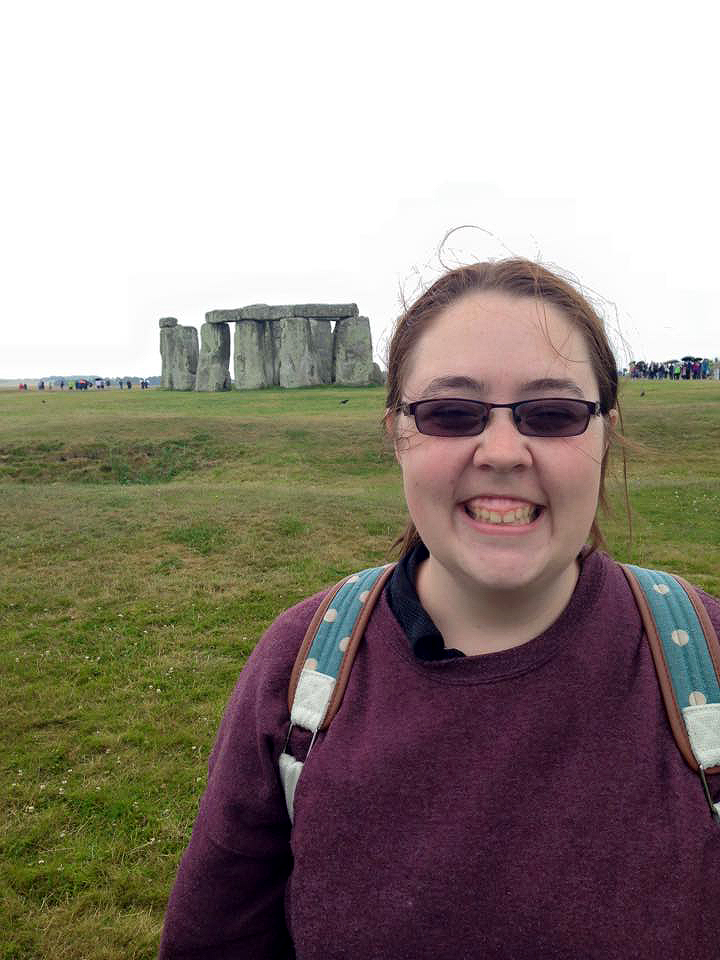UT alumna learns in non-traditional ways about Scotland’s storytelling tradition

She already had earned her first master’s degree at London’s University of Westminster in Museums, Art and Galleries, and decided to go and study Ethnology and Folklore. “I decided I wanted another master’s, so I went to Scotland to a little town called Aberdeen. It’s way up north, right on the North Sea,” says Porath.
Ethnology is “the study of people and their relationship with their culture, and how they tie that into the bigger picture,” says Porath. “There’s a deep love of their culture,” she says of the Scottish. “There’s a need to identify with their past and how they want to connect to that past and bring it into the future. I studied a story in Shetland, which is one of the very far northern islands. It’s closer to Norway than it is to Scotland.”
It was in Shetland that Porath met the island’s former postmaster, Lawrence Tulloch, who has since passed away. “He told me a story, and I really connected with it because of its nature; it’s a Christmas, horror story. I really like scary stories,” says Porath. “It appealed to the darker sense of my reading genre.

And that’s what Porath researched and wrote about for her second master’s thesis at the University of Aberdeen. “I studied the transition from Norway to Shetland and how it’s forming once again in modern culture. “It was purely an oral tradition—it was told verbally for years and years and years, and it’s only recently, within the past 50 years, it has become part of the literary world and has been published in a collection.” Porath theorizes that the story is a remnant of a much older tale connected to the Vikings.
In her current PhD program at the University of Glasgow, Porath is continuing her research into these old Scottish folk tales. “I’m going to look at stories and their social context within modern Scottish culture,” she says.
Getting a job teaching or working at a museum appeals to Porath, who would like to stay in Scotland for her profession. “Scotland is going through a bit of a revolution of understanding its own culture and its own place in the world, once again. I think it’s an ideal area to be.” Porath references the four-year-old vote in which the Scottish people decided to remain part of the U.K. instead of having Scotland become its own independent country. “I speculate that the 2014 referendum put everything in perspective for Scotland. And it realizes it doesn’t quite understand itself culturally as it once did, but it’s getting to the point of ‘we can represent ourselves on a larger scale,’” she says.
Porath hails from Tecumseh, Mich., where her parents still live. The story of her own journey is one with obstacles, but nothing that she has allowed to stop her from earning advanced degrees in a foreign land or exploring Europe on her own with a backpack and a train ticket. She has adapted to learning in non-traditional ways because of a diagnosis of attention deficit disorder and Dysgraphia, a processing disorder, which causes difficulty connecting verbal cues to the written word.Porath believes her curiosity for cultural studies began with sharing stories with people on a trip she took in 2011. “At the time, there was a lot of political unrest; 2011 was hard on the European Union, a lot of strikes and riots were going on,” says Porath. “That being said, it was the people at street level who made the trip worth it. My favorite memories are from the people I got to know and share a meal with. I learned that while we may be individuals, our stories, lives, and everything we are make us all that much more the same.”
Her solo travel included a few European destinations. She traveled to Germany, Italy and the Czech Republic. Prague replaced the City of Light, says Porath. “My plans changed slightly when I did some research into St. Vitus Cathedral in Prague. I love Gothic architecture,” she says, so she forgot about Paris and went to see some of the world’s oldest surviving Gothic architecture.
“I didn’t know the language, the city or the country, and managed to get myself lost. Luckily, I met a kind woman who helped me out. There was the language barrier; however, we understood each other in simple terms. She guided me back to the train station I needed to go to.”Public transportation was her mode of travel, and Internet searches and the kindness of native residents aided in finding the places she wanted to visit. “I recall I took the train from Prague to Rome overnight and had to share my cabin with a bunch of Italian men. It was awkward; however, they sang, drank and shared their food with me. I don’t recommend it to new travelers; however, I did have a lot of fun.”
Although the stories Porath researches are often about dark and mythical creatures—remember, Scotland is home to the Loch Ness Monster—she has found the Scottish people to be friendly and welcoming. “There’s just something about Scotland that’s very humbling and warming, and you just have a sense of belonging there.”








